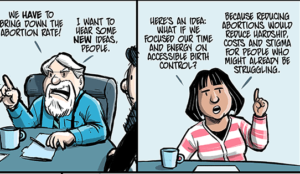
Source: Huffington Post
We all show some discretion when we go through the process of figuring out whether or not we should say what we’re thinking or feeling.
Most of us recognize that telling someone that we disagree with something they’ve said or done can hurt feelings, create tensions, or cause an argument that maybe we just don’t want to have.
This discretion, by itself, isn’t all bad. It allows us to maintain our relationships by choosing to keep potentially upsetting opinions to ourselves.
However, when it does become a problem is when the silencing of our own emotions becomes so subconsciously embedded that it impacts our ability to even identify what we’re feeling.
Personally, I have a very hard time inconveniencing anyone with my feelings or emotions.
This means that whether I’m angry, irritated, or even just hungry, I don’t want to bother anyone else with those things. And because I’ve internalized that my feelings are unimportant, I also have a tough time figuring out what I’m feeling sometimes, which further complicates my ability to emote.
This aversion to “inconveniencing” someone with your feelings is called “self-silencing.”
Self-silencing, a component of psychological self-concealment, happens when we decide that the potential fallout of how we feel outweighs whatever benefit there might be in expressing those feelings.
For me, telling someone that I’m hungry and that I need to eat is outweighed by my worry that they’re going to feel inconvenienced by having to stop for food. Often, I have to say the words “It’s okay to say that you are hungry” several times in my head before I can say it aloud.
While this may seem like a silly, trivial problem, it’s the mildest example of self-silencing that I, and many others, struggle with.
And on a societal level, this seemingly trivial issue can lead to more complicated and compacted problems. The act of self-silencing within marginalized groups points to a larger cultural narrative: The needs of the non-marginalized are secondary to those of the marginalized.
For example, according to Dana C. Jack, EdD, a professor at Fairhaven College of Interdisciplinary Studies at Western Washington University:
“Women’s inner arguments about how they should act and feel revealed a divided self that results from self-silencing in an attempt to preserve relationships. Inwardly, they experienced anger and confusion while outwardly presenting a pleasing, compliant self trying to live up to cultural standards of a good woman in the midst of fraying relationships, violence, and lives that were falling apart.”
This fear of outwardly presenting your inner emotions is experienced not only by women, but by many members of marginalized groups who are told that their opinions aren’t relevant, useful, or worthy of acknowledgment.
Further, the risk of violent reactions from openly expressing inner feelings or opinions causes many marginalized people to push the emotions so deeply into themselves that they become difficult to identify.
If you’ve spent the majority of your life being told that what you feel isn’t worth expressing, and could, in fact, get you into trouble, it can seem pointless to even try to figure out what you’re feeling.
However, I would argue that learning to identify what you’re feeling and what’s triggering that emotion is the first step toward unlearning self-silencing and therefore toward validating your own emotions.
So here are three processes that I have found to be helpful when I can’t identify what I’m feeling.
1. Take Inventory of What You’re Feeling Physiologically
Are you sweating? shaking? Does your face feel warm? Are you light-headed?
Most of the time, we’re feeling a jumble of different emotions at any given moment. It isn’t that uncommon to feel hungry and angry at the same time — or even to mistake one for the other.
In fact, emotions like fear, anger, and anxiety can have reactions in your body that are quite similar to each other. Generally, we can recognize some of the physical reactions that are fairly common to everyone: sweating when we’re nervous, getting goosebumps when we’re scared, or becoming short-of-breath when we’re panicking.
Even so, we each have telltale physical reactions to these emotions that can be very specific to our own bodies. The list of physical responses to stress is long and encompasses a wide variety of symptoms, ranging from headaches all the way to heart attacks.
The way that your body reacts to stress can fall anywhere within this range, so taking inventory of the ways in which your body physically responds to different emotions can help you better identify when you are feeling that emotion.
For example, if you start to notice that you get jittery whenever you’re anxious, the next time you feel jittery, but don’t know why, it might indicate that maybe you’re anxious about something and don’t realize it.
Being able to associate your physical response to an emotion enables you to start looking at your body and mind as connected to each other, and not as two completely separate parts of yourself.
2. The ‘Why?’ Test
Children do this constantly. Every few minutes, they ask “why” something is.
It doesn’t feel natural to ask this question of yourself, but it can help because the endless trail of questions can actually lead somewhere.
When you force yourself to dig deeper into what’s causing the emotion you’re feeling, you can often stumble on some things that you didn’t notice before.
It might go something like this: I feel like I want to cry right now. Why? Because I’m angry. Why? Because someone made a comment that was kind of offensive. Why were you offended? Because the comment was directed at people of color. Why did that upset you? Because I am a person of color.
And so forth.
This line of questioning can get you to the root of an issue so that you can address the cause of your feeling, rather than the feeling itself. In turn, this will help you avoid those negative feelings in the future.
It’s not easy. Pretty often, your mind will rebel against digging deep — and that’s okay. Sometimes you’re not ready to get to the core of what you’re feeling yet, and that’s fine.
Being able to “Why?” yourself until you get to the root cause of an emotion takes practice. It’s a skill that a lot of us have to learn because we’ve become so accustomed to thinking our emotions are invalid.
Fear of disapproval, or even just a lack of time to think about what’s really happening internally, are two reasons that we might avoid delving into how we’re feeling.
When we’re rushing to get somewhere on time, running errands, or meeting a deadline, it’s easy to push down what we’re feeling because it seems like we don’t have time to acknowledge those emotions.
However, taking the time to even ask yourself one “Why?” question is a good way to start thinking past the initial nausea, wanting to cry, or wanting to throw something across the room.
In the process of going through these questions, you’re allowing yourself to focus on a particular line of thought, and this in itself can have a calming and stabilizing effect.
Once you start doing the “Why?” test, you’ll find that over time it gets much easier to go through four or five questions in a shorter period of time.
3. Note Your Alarm Bells
Alarm bells — or triggers — can be people, places, subjects, smells, or sounds that emotionally impact you. Different emotions can be triggered by different situations.
One of the biggest triggers for many of us is hearing a song that brings back a good or bad memory. It might be the song that you were playing when you first met your partner or a song that one of your parents played over and over again when you were young. As a result, hearing that song can make you nostalgic, anxious, or even angry.
Another example for many people is being in a setting where you are the “Other.”
Maybe you’re the only person of color, the only non-straight person, the only woman – whatever marginalized identity (or intersection of marginalized identities) that sets you apart from the majority of the people in the room.
Situations like these are often triggering moments because they’re usually situations where you feel uncomfortable, but don’t know how to react to that discomfort.
While you can’t always know exactly when you’re going to step into an uncomfortable situation, the better you become at knowing your triggers, the better you get at choosing to avoid those triggers or otherwise figuring out how you’re going to navigate a triggering situation.
This is the final step, and perhaps the most important, because learning to identify your triggers gives you agency; it allows you to have some control over the way your emotions will impact your behavior.
***
These are just a few of the ways to start identifying what’s happening internally, and by no means the only ways, especially considering the fact that different people are triggered by different experiences and are in different places on the path to self-expression.
However, learning to at least identify those emotions and acknowledging that what you are feeling is valid is an important factor in learning to stop self-silencing.
What are some ways that you take inventory of your feelings or otherwise stop self-silencing in your own life? Let us know in the comments!
[do_widget id=”text-101″]
Michelle Dominique Burk is a recent New York City transplant pursuing her MFA in Creative Writing at Columbia University. She has published articles on Thought Catalog and Esteem Yourself online magazine. In her free time, she enjoys pop culture analysis and contemplating time travel paradoxes.
Search our 3000+ articles!
Read our articles about:
Our online racial justice training
Used by hundreds of universities, non-profits, and businesses.
Click to learn more




















